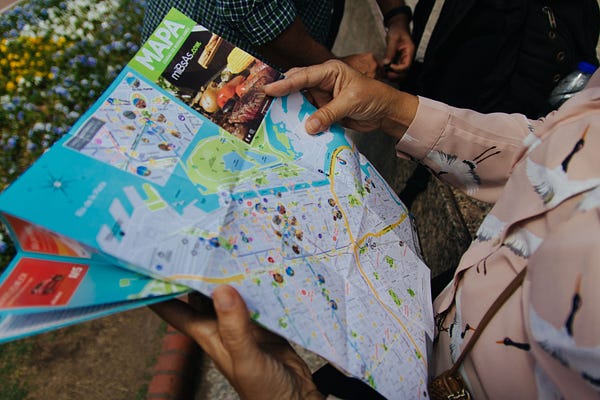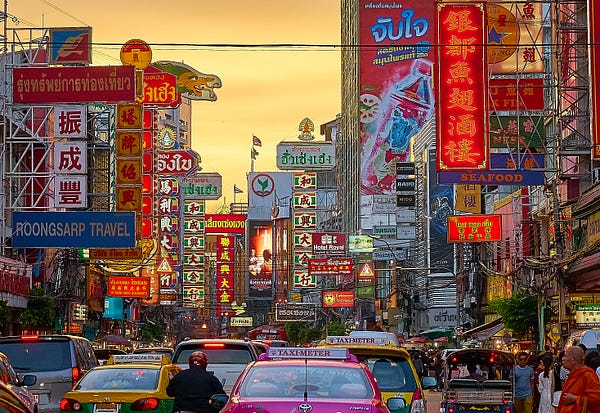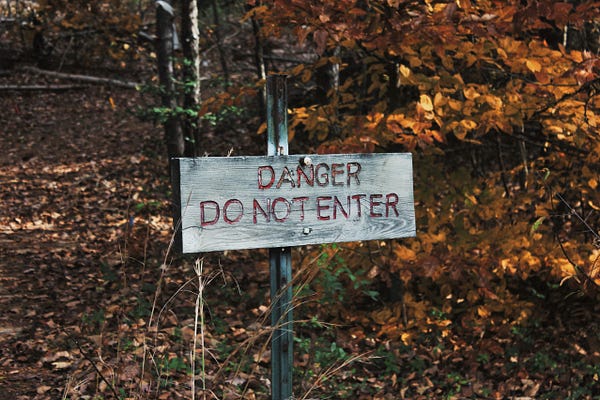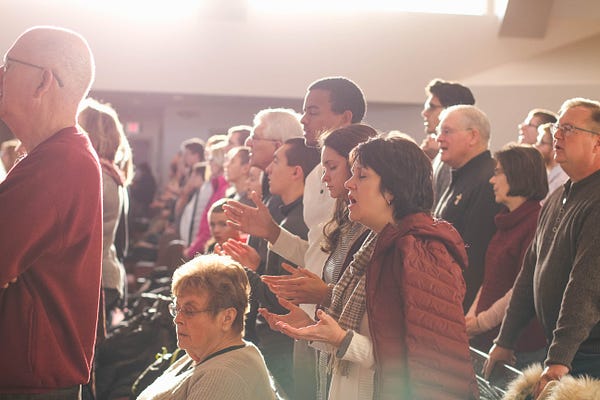Big, sweaty crowds of people. Pushing. Shoving. The sun is beating down. A rude man bumps your shoulder on his way past. You’re starting to feel claustrophobic, but you’re outside! Why are there so many goddamn people? Can they walk faster? Get put of the way? Or just … leave?

I’m not talking about a Travis Scott concert. Nope, this was my thought process on one beautiful sunny day when I made the mistake of taking my sister to the Santa Monica 3rd Street Promenade in the middle of the summer. When it was absolutely packed with tourists. Never again, I told myself, never again.
That day I was irritated by long lines and heavy traffic in Santa Monica (near where I live), but i’ve come to the realization that some locals have it much much worse. For example, many Thai citizens report that tourists cause problems for them by disobeying traffic/ pedestrian rules on the road, making their city less safe to drive in. Sites of architectural and cultural significance are also at risk with the influx of foreigners in some countries. Rome’s famous Colosseum was vandalized by two American tourists in 2015, who carved their initials into the ancient site. Peruvian officials have complained about a recent trend of nude tourism at the Machu Picchu citadel, which has proven discomforting to others and disrespectful to the culture and history of the lands. Finally, on a broader scale, sex tourism in Thailand — driven mostly by demand from Westerners — has contributed to a growing number number of red-light districts and greater sex trafficking in the streets of Bangkok.
The list goes on and on. There’s a dark side to tourism that comes when people from other cultures take advantage of a new country, treating it like their own personal playground.

But I’m not here to say ‘Let’s boycott travel and tourism!’ Far from it! We should continue to explore!
At the end of the day, tourism can have a lot of benefits for locals too. Take the city of Santa Monica for example. Santa Monica Travel and Tourism’s 2017 report showed that tourism contributed 1.96 billion dollars to the city’s economy and creates over 13,000 jobs for locals. Amazing! The city uses funds from tourism for a number of measures to benefit the community such as expanding affordable housing and raising minimum wage. Tourism makes good financial sense, regardless of one’s attitude to welcoming international visitors.
According to a Bangkok Post article from 2017, the portion of Thailand’s GDP which comes from tourism is 17% and expected to rise. To give this some context, the average percentage which a country gains from tourism is typically around 9%. Further, the tourism industry produced over 4 million hires for Thailand in 2016. Similarly, a report from the World Travel & Tourism Council estimates that travel and tourism will account for 18% of Cambodia’s GDP in 2018, as well the hiring of almost 2 million people in the same year. Other tourist hotspots exhibit the same industry growth and economic benefit from travel.

And if travel and tourism prove to be beneficial to both the visitor and the host, you can be sure they won’t be slowing down anytime soon. So then, how can we limit the harm by travel and maximise the gain, for all parties involved?
If you’re looking to be responsible and respectful during your travels to other nations, take a look at these tips:
Follow rules

It’s not hard to do. Sorry to all the bad boys and girls out there, but being “bad” is just not cool anymore. Streaking at Machu Picchu and carving your name into the Colosseum are extremely disrespectful and insulting to the people you are visiting. If you are traveling to complete dares or feel badass it might be a good time to reconsider your reasons for travel.
Look at your surroundings

Most of the time, people could stand to talk a little less and listen a little more. Taking a moment to look around and trying to understand the situation can give some much needed clarity to the frantic traveler. As you walk into a city you may find that women wear more conservative clothing in this new area or you might hear people speaking in hushed tones at the entrance to a temple. Being observant can help one to blend into their surroundings a little bit better.
Ask questions

Asking questions is the easiest way to get a grasp on the environment you are traveling in. Whether it be asking an official for the photography rules in a gallery, or poking a fellow pedestrians brain about the best spot to stop for a tasty meal. Offering someone a query is something of an olive branch while traveling because it defers the power to the interviewee and allows them to shed their expertise on the traveler. People are often very happy to answer questions from a foreigner, and you might even make a new friend in the process.
Learn the local language

This tip goes hand in hand with the previous one, but learning some basic phrases in the language of the people you are visiting is essential. First of all, it is a sign of respect to attempt using the language of the locals, instead of blurting out concerns in English (as Americans are known to do).. It can also be critical to know the local language in case people need to communicate something urgently like “stop. Don’t go in there” or “Be careful.”
Research your activities before you do them

Of course, all good treks include spontaneous adventures but, it’s always good to have an idea of where you want to go and what it will be like. This makes the above suggestions easier because you may know the rules before diving in or even understand the vibe of the location a bit better. For example, you might find that Peruvian officials are mandating that you book a tour guide to see the ruins, and now you can reserve one instead of arriving and trying to navigate the sit yourself, getting into trouble with the authorities.

